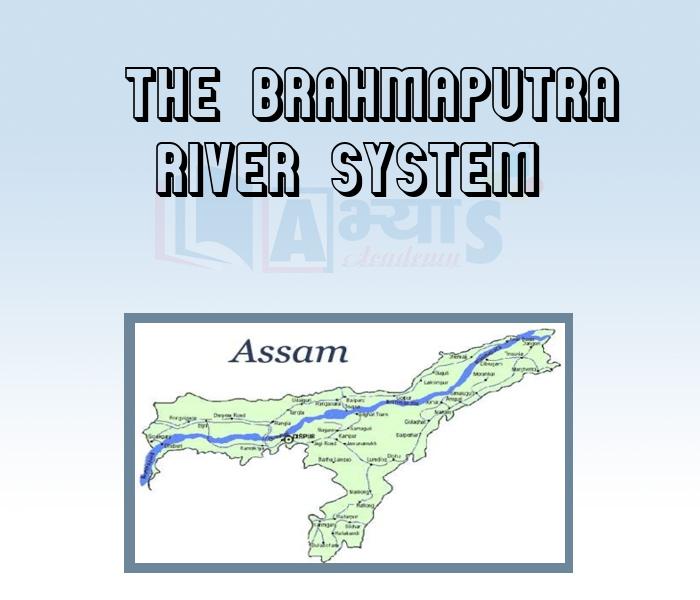The Brahmaputra River System











The Brahmaputra River System
The Brahmaputra River System:
The Brahmaputra rises in Tibet, east of Mansarowar lake which is very close to the sources of the Indus and the Satluj. It flows Eastward parallel to the Himalayas till it reaches the Namcha Barwa mountain (7757m) where it takes a ‘U’ turn and enters India in Arunachal Pradesh through a gorge. Here, it is called the Dihang, It is slightly longer than the Indus and most of its course lies outside India. It is joined by many tributaries like Dibang, Lohit etc to form the Brahmaputra in Assam. It carries very little silt and water from Tibet as it is a cold and dry area. In Assam it carries a large amount of water and large amount of silt because Assam is a high rainfall area. It has a braided channel, in Assam, forming many riverine islands
By which name does the Brahmaputra enter into india? | |||
| Right Option : A | |||
| View Explanation | |||
Which river has braided channel in most of its length ? | |||
| Right Option : B | |||
| View Explanation | |||
Students / Parents Reviews [10]
It was good as the experience because as we had come here we had been improved in a such envirnment created here.Extra is taught which is beneficial for future.

Eshan Arora
8thIt was a good experience with Abhyas Academy. I even faced problems in starting but slowly and steadily overcomed. Especially reasoning classes helped me a lot.

Cheshta
10thMy experience was very good with Abhyas academy. I am studying here from 6th class and I am satisfied by its results in my life. I improved a lot here ahead of school syllabus.

Ayan Ghosh
8thMy experience with Abhyas is very good. I have learnt many things here like vedic maths and reasoning also. Teachers here first take our doubts and then there are assignments to verify our weak points.

Shivam Rana
7thIt has a great methodology. Students here can get analysis to their test quickly.We can learn easily through PPTs and the testing methods are good. We know that where we have to practice

Barkha Arora
10thAbhyas Methodology is very good. It is based on according to student and each child manages accordingly to its properly. Methodology has improved the abilities of students to shine them in future.

Manish Kumar
10thOne of the best institutes to develope a child interest in studies.Provides SST and English knowledge also unlike other institutes. Teachers are co operative and friendly online tests andPPT develope practical knowledge also.

Aman Kumar Shrivastava
10thAbout Abhyas metholodology the teachers are very nice and hardworking toward students.The Centre Head Mrs Anu Sethi is also a brilliant teacher.Abhyas has taught me how to overcome problems and has always taken my doubts and suppoeted me.

Shreya Shrivastava
8thA marvelous experience with Abhyas. I am glad to share that my ward has achieved more than enough at the Ambala ABHYAS centre. Years have passed on and more and more he has gained. May the centre flourish and develop day by day by the grace of God.

Archit Segal
7thBeing a parent, I saw my daughter improvement in her studies by seeing a good result in all day to day compititive exam TMO, NSO, IEO etc and as well as studies. I have got a fruitful result from my daughter.
